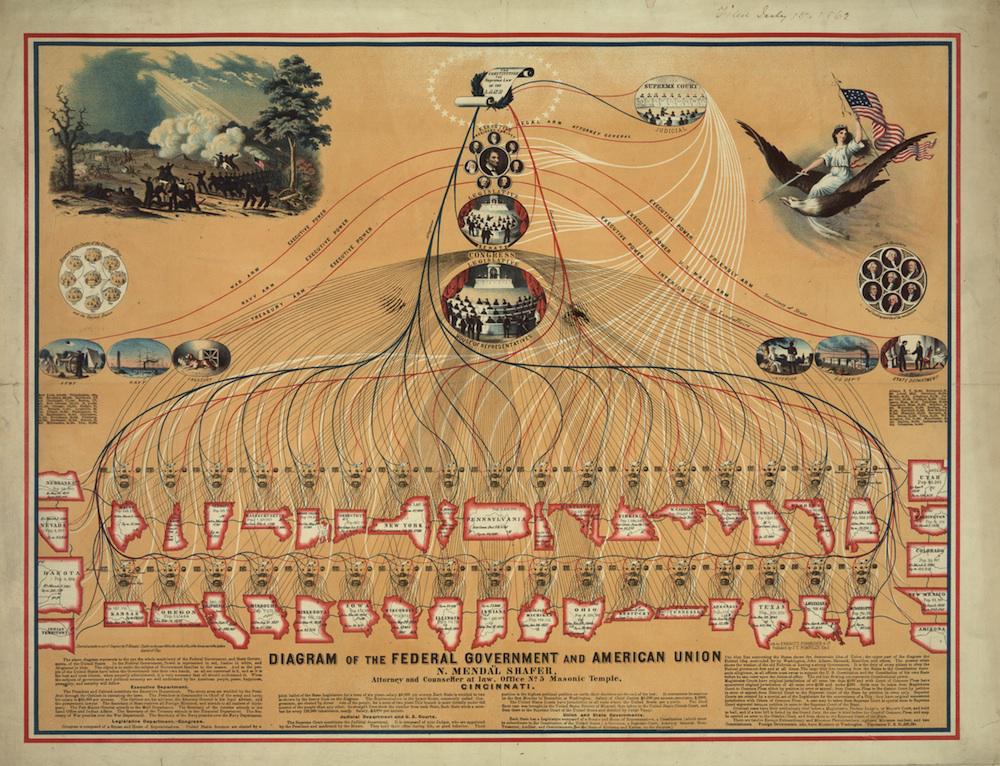The Vault is Slate’s history blog. Like us on Facebook, follow us on Twitter @slatevault, and find us on Tumblr. Find out more about what this space is all about here.
This diagram of the structure of the federal government, created by Cincinnati lawyer N. Mendal Shafer in 1861, aims to end the conflict between North and South through education. “The object” of the chart, Shafer writes, “is to make the subject of Government familiar to the masses.” Familiarity, he intimates, would solve the problems that the nation was experiencing; the implication is that secessionists (and, perhaps, people living in the North who didn’t support the war) just didn’t comprehend the government’s purpose. “When the subjects of government and political economy are well understood by the American people,” Shafer writes, “peace, happiness, prosperity, and security will follow.”
Like this tree chart of the management structure of the New York and Erie Railroad—published six years previous and groundbreaking in its approach—the “Diagram of the Federal Government and American Union” makes the structure of power look organic. Here, the black lines between the image of Congress and each individual state—which represent senators and congressmen—look like a spider’s web. The red and blue lines flowing from the Constitution and the executive branch bear a resemblance to the arteries and veins of the human body.
“The present crisis shows the wisdom of the old Federals of having a strong government,” Shafer writes in the chart’s text. “It is the duty of every citizen to obey the Federal government first and at all times.” In order to broaden the chart’s influence, Shafer tried to get it into the hands of schoolchildren. He sent the Diagram to the Board of Education of the City of New York in 1864, which passed it along to the Committee on Course of Studies and School Books.
Click on the image below to reach a zoomable version, or visit the chart’s page on the Library of Congress website.

Library of Congress.